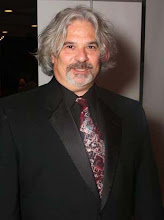



In today's computer generated world, I wanted to see what could be created by starting out with a Kandinsky and moving it forward as the source of inspiration. Where could it go, and what would it look like if a Kandinsky itself was the basic beginning model for a work of Digital Art. Taking all of Kandinsky's knowledge, wisdom, composition and color sense, where could it all lead up to?
In the Digital Age, the eloquent word of "appropriation" is used. In music it would be "sampling." Starting with a source and "re-purposing" the initial creation. In our legal world of "intellectual property" the creation has to be removed several times from its originality. Forgetting all legal mumbo-jumbo, and getting to the final result, we see how no matter how we try to distort, abstract and enhance, Kandinsky's influence is ever present. Perhaps in some way, we want it there. We read reviews of artists all the time stating that the work "resembles, or influences." We draw analogies to fit artists of merit to those that wish to be there. Good name recognition gives hope. But in the end, we go back to Gauguin, "Is it new or is it plagurism?"
In this case, I will let you decide.















